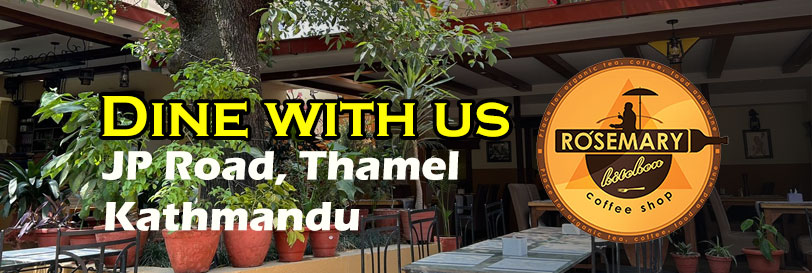Overview And Highlights
TRIP FACTS

Why Choose the Everest Three Peaks Expedition?
The Everest Three Peaks Climbing is not just another trekking trip — it is a 30-day Himalayan odyssey designed for mountaineers who want more than a single summit. By combining Mera Peak (6,476m), Island Peak (6,189m), and Lobuche East Peak (6,119m) in one itinerary, you gain extensive experience in Nepal’s most challenging alpine environments.
Climbers often attempt one or two trekking peaks, but very few expeditions combine three major summits with a crossing of the Amphu Laptsa Pass (5,845m). This makes it the ultimate package for those aiming to prepare for 7,000m and 8,000m peaks in the future.
Difficulty Level – Who Is This For?
-
Grade: Strenuous / Alpine PD+
-
Experience Needed: Prior high-altitude trekking experience (e.g., Everest Base Camp, Manaslu Circuit, or Kilimanjaro) is recommended. Basic climbing knowledge is a plus, though our guides provide skill training.
-
Technical Sections:
-
Mera Peak: Mostly glacier walk, less technical but high altitude.
-
Island Peak: Steeper headwall (ice/snow 45–50°), requires fixed rope use.
-
Lobuche East: Mixed rock and ice, more technical with exposed ridges.
-
Amphu Laptsa Pass: Technical crossing with ropes and glacier descent.
-
👉 If you are physically fit, determined, and want real alpine climbing exposure, this expedition is suitable for you.
Altitude Profile – Key Elevations
| Location | Elevation (m) | Notes |
|---|---|---|
| Kathmandu | 1,300 | Starting point |
| Lukla | 2,840 | Gateway to Everest region |
| Khare | 5,045 | Mera Peak base village |
| Mera Peak Summit | 6,476 | First peak |
| Amphu Laptsa Pass | 5,845 | Technical crossing |
| Island Peak Summit | 6,189 | Second peak |
| Lobuche East Summit | 6,119 | Final peak |
| Gokyo | 4,900 | Lakeside village |
| Namche Bazaar | 3,440 | Sherpa hub |
Best Season to Climb Three Peaks
The best climbing windows are Spring (March–May) and Autumn (September–November).
| Season | Weather | Advantages | Challenges |
|---|---|---|---|
| Spring (Mar–May) | Stable, warmer at high camps | Longer days, great visibility, pre-monsoon climbing season | Can be busy on Island Peak |
| Autumn (Sep–Nov) | Clear skies, cooler temps | Best Himalayan views, post-monsoon stability | Colder nights |
| Winter (Dec–Feb) | Very cold, heavy snow | Quieter trails | Not recommended due to harsh conditions |
| Monsoon (Jun–Aug) | Rain & landslides below 3,500m | Lush greenery | Dangerous on passes |
Training & Preparation
Climbers should prepare at least 3–6 months in advance with:
-
Cardio training: Running, cycling, hiking with a loaded pack.
-
Strength training: Core, legs, and endurance workouts.
-
Altitude practice: If possible, practice treks above 4,000m.
-
Climbing skills: Familiarity with crampons, ice axe, and ropes.
Food & Accommodation
-
In Kathmandu: 3-star hotels with breakfast included.
-
On trek: Teahouses serving dal bhat (rice & lentils), pasta, soups, momos, and bread.
-
On climbs: Expedition-style meals at base and high camps, with tea, coffee, and energy snacks.
-
Water: Treated/boiled water available; purification tablets recommended.
Safety & Support
Annapurna Encounter ensures maximum safety with:
-
Experienced Sherpa climbing guides (UIAA-trained, summit history on 8,000m peaks).
-
1:2 guide-to-climber ratio during summits.
-
Emergency equipment: Portable oxygen, oximeter, satellite phone.
-
Helicopter evacuation coordination (not included in cost, covered by insurance).
Packing List (Condensed)
-
Clothing: Expedition down jacket, base layers, waterproof shell, thermal gloves.
-
Climbing Gear: Harness, helmet, crampons, ice axe (personal, or available for rent).
-
Sleeping: -20°C sleeping bag, insulated pad.
-
Other Essentials: Trekking poles, headlamp, sunscreen, first-aid kit.
Everest Three Peaks Climbing Packages (2025/2026)
1. Standard Package (Recommended)
The Standard Everest Three Peaks Package is designed for climbers who want a well-rounded expedition with all permits, domestic flights, Sherpa climbing guides, teahouse accommodation, and tents at base camps. It offers excellent value with full support and safety measures included.
Includes:
-
Airport transfers & 3-star hotels in Kathmandu (BB)
-
Domestic flights (Kathmandu–Lukla–Kathmandu)
-
Climbing permits for Mera, Island, Lobuche
-
All meals during trek and climbs
-
Accommodation: teahouses + tents at base/high camps
-
1:2 Sherpa climbing guide-to-client ratio on summits
-
Porters for luggage (25kg per porter)
-
Group climbing equipment & training sessions
-
Medical kit with oximeter, emergency support
Excludes:
-
International flights
-
Personal gear rental (boots, harness, crampons, etc.)
-
Travel insurance with rescue cover
-
Tips for guide, porter, driver
💲 Price per person (Standard Package)
| Group Size | Price (USD) |
|---|---|
| 1 (solo) | 6,990 |
| 2 | 5,200 |
| 3–7 | 4,750 |
| 8–12 | 4,350 |
| 13–20 | 3,990 |
2. Budget Package (Teahouse & Essential Services)
The Budget Everest Three Peaks Package is for climbers who want to keep costs low while still experiencing all three summits. You’ll stay in teahouses, carry some personal gear, and hire minimal staff — but still have essential climbing support and permits included.
Includes:
-
2 nights hotel in Kathmandu (tourist standard)
-
Domestic flights (Kathmandu–Lukla–Kathmandu)
-
All trekking permits & peak climbing permits
-
Teahouse accommodation during trek
-
Tented accommodation at high camps only
-
1 Sherpa climbing guide for every 3 climbers
-
Porters (shared basis)
-
Group climbing gear & basic training
Excludes:
-
Meals in Kathmandu (except breakfast)
-
Personal climbing equipment
-
Extra snacks, Wi-Fi, hot showers on trek
-
Travel insurance & rescue cover
-
Tips for guide/porter
💲 Price per person (Budget Package)
| Group Size | Price (USD) |
|---|---|
| 1 (solo) | 5,300 |
| 2 | 4,350 |
| 3–7 | 3,990 |
| 8–12 | 3,650 |
| 13–20 | 3,250 |
3. Luxury Package (Premium Comfort & Safety)
The Luxury Everest Three Peaks Package is designed for adventurers who want to enjoy the challenge of three Himalayan peaks with the highest level of comfort, safety, and service. This package includes luxury hotels in Kathmandu, upgraded lodges on trek, private helicopter options, and additional acclimatization days for maximum summit success.
Includes:
-
5-star hotels in Kathmandu with breakfast
-
Luxury lodges where available (e.g., Namche, Lukla)
-
Private airport transfers & domestic flights (option to upgrade to helicopter)
-
Permits for all three peaks
-
Full board meals with upgraded dining options
-
Personal climbing Sherpa (1:1 ratio on summits)
-
Extra acclimatization days built into itinerary
-
Oxygen cylinders & masks at high camps (for emergency use)
-
Portable altitude chamber & advanced medical support
-
Complimentary duffle bag & trekking map
-
Farewell cultural dinner in Kathmandu
Excludes:
-
International flights
-
Personal climbing equipment
-
Travel insurance with rescue coverage
-
Tips for staff
Price per person (Luxury Package)
| Group Size | Price (USD) |
|---|---|
| 1 (solo) | 9,900 |
| 2 | 7,200 |
| 3–7 | 6,500 |
| 8–12 | 5,950 |
| 13–20 | 5,500 |
Itinerary Expand All Close All
Upon arrival at Tribhuvan International Airport, our representative will welcome you and transfer you to your hotel in Kathmandu. In the evening, you’ll meet your climbing guide for a welcome dinner and initial trip briefing. Overnight at hotel.
Food
B
Accomodation
Hotel
Elevation
1350
This day is reserved for final preparation. Your guide will conduct a gear check, review the climbing plan, and assist with renting or buying missing equipment. Free time can be spent exploring Kathmandu’s UNESCO World Heritage Sites like Swayambhunath (Monkey Temple) and Kathmandu Durbar Square. Overnight in Kathmandu.
Food
B
Accomodation
Hotel
Elevation
1350
A short and scenic mountain flight takes you to Lukla (2,840m), the gateway to the Everest region. From Lukla, the trail leads through lush forests, suspension bridges, and small settlements before reaching Paiya. Overnight in Paiya.
Food
BLD
Accomodation
Teahouse
Elevation
2730
The trek continues through dense rhododendron and bamboo forests. Expect gradual ascents and descents along narrow mountain paths with views of the Dudh Koshi valley. Pangoma is a traditional Sherpa village, known for its Buddhist monastery. Overnight in Pangoma.
Food
BLD
Accomodation
Teahouse
Elevation
2850
Today’s trail climbs gently through terraced farmland and alpine vegetation. The trek to Ramilo Danda offers stunning panoramas of Mera Peak and neighboring ridgelines. Overnight at a lodge in Ramilo Danda.
Food
BLD
Accomodation
Teahouse
Elevation
2745
This is a challenging day with several ups and downs through thick forest, crossing streams and remote valleys. Wildlife such as Himalayan Thar and musk deer may be spotted. After a long day, arrive at Chetra Khola for overnight.
Food
BLD
Accomodation
Teahouse
Elevation
3150
The trail ascends gradually alongside the Majang Khola and merges with the Hinku Khola. As you approach Kothe, the view of Mera Peak’s south face becomes visible. Overnight in Kothe.
Food
BLD
Accomodation
Teahouse
Elevation
3600
A short yet scenic day, walking along the Hinku Khola. Pass yak pastures and summer settlements before reaching Thangnak, a small village with basic teahouses. Overnight in Thangnak.
Food
BLD
Accomodation
Teahouse
Elevation
4350
The trail climbs steeply along the Dig Glacier and lateral moraines. By afternoon, you reach Khare, the last settlement before Mera Peak. This base camp village serves as a training hub. Overnight in Khare.
Food
BLD
Accomodation
Teahouse
Elevation
5045
A crucial day for acclimatization. Guides conduct technical training sessions, covering crampon use, rope handling, ascender/descender techniques, and glacier safety. This prepares climbers for the high camps and summit push.
Food
BLD
Accomodation
Teahouse
Elevation
5045
Climb steadily over the Mera Glacier, establishing High Camp on a rocky ridge. The camp provides jaw-dropping sunset views over Kanchenjunga and Makalu. Overnight in tents.
Food
BLD
Accomodation
Teahouse
Elevation
5800
Start early around 2–3 am. Using fixed ropes and crampons, ascend to the wide summit ridge. From the top, enjoy one of the finest Himalayan panoramas: Everest, Cho Oyu, Makalu, Lhotse, and Kanchenjunga. Descend carefully to Kongma Dingma for overnight.
Food
BLD
Accomodation
Tent
Elevation
6476
The trek moves through the remote Hinku Valley, crossing yak pastures and glacial rivers to reach Seto Khola. Overnight camp.
Food
BLD
Accomodation
Tent
A short but steep day brings you to the foot of the Amphu Laptsa Pass, one of Nepal’s most technical trekking passes. Prepare for a demanding climb tomorrow. Overnight camp.
Food
BLD
Accomodation
Teahouse
Elevation
5400
With ropes and guide support, cross this challenging pass with ice and fixed lines. The descent leads into the Imja Valley, arriving at Chukung (4,730m). Overnight in Chukung.
Food
BLD
Accomodation
Teahouse
Elevation
5845
A full rest day after the intense pass crossing. Optional short hikes to surrounding ridges for acclimatization. Overnight in Chukung.
Food
BLD
Accomodation
Teahouse
The trail follows the Imja Khola before reaching Island Peak Base Camp. This area is bustling with climbers preparing for their ascent. Overnight in tents.
Pre-dawn climb begins with rocky slopes, leading to glaciers and a steep ice headwall (45–50°). With fixed ropes, reach the narrow summit ridge. Views of Ama Dablam, Lhotse, and Makalu dominate the horizon. Descend back to Chukung. Overnight lodge.
Food
BLD
Accomodation
Teahouse
Elevation
6189
The trail joins the Everest Base Camp route. Pass Dingboche and head toward Lobuche, a popular stop for trekkers en route to EBC. Overnight in Lobuche.
Food
BLD
Accomodation
Teahouse
Another rest day to recover and prepare for the final summit. Optional acclimatization hike to Khumbu Glacier viewpoints.
Climb steeply over rocky ridges to establish High Camp. Final summit briefing and preparation. Overnight in tents.
Start early to ascend the icy slopes. Technical sections require rope support. From the summit, enjoy breathtaking views of Everest, Lhotse, Nuptse, Pumori, and the Gokyo Lakes. Descend back to Lobuche village.
A short scenic trek to Dzongla, surrounded by alpine lakes and dramatic cliffs. Overnight in teahouse.
The trail crosses the Cho La region, offering striking views of Cholatse Peak. Overnight in Thagnak.
Reach the famous Gokyo Valley, with its turquoise lakes. The settlement of Gokyo sits beside the third lake, offering stunning views. Overnight in Gokyo.
Descend through alpine valleys with views of Ama Dablam and Thamserku. Overnight at Dole.
Return to the bustling Sherpa hub of Namche Bazaar. Enjoy hot showers, bakeries, and cultural experiences. Overnight in Namche.
The final trekking day retraces your steps through suspension bridges and pine forests. Celebrate with your team in Lukla. Overnight lodge.
Morning mountain flight back to Kathmandu. Free time for shopping or cultural tours. Farewell dinner in the evening. Overnight in hotel.
Transfer to the airport for your international flight. End of the Everest Three Peaks Expedition.
Services Included on Price
Cost Includes
Accommodation & Meals
- 2 nights tourist-standard hotel in Kathmandu with breakfast
- Teahouse lodging on trek (basic rooms)
- Meals during trek and climbing days as set menu at teahouses/camps
- Tents at high camps only
Transport
- Airport transfers
- Domestic flights: Kathmandu–Lukla–Kathmandu
Permits & Entry
- All three peak permits: Mera, Island, Lobuche East
- Sagarmatha National Park and local permits
Guides & Staff
- Lead Sherpa climbing guide
- Approx. 1:3 guide-to-client ratio on summit days
- Shared porters for group duffels (weight-limited)
Equipment & Safety
- Essential group climbing gear and basic first aid kit
- Emergency coordination assistance
Cost Excludes
- Lunch and dinner in Kathmandu
- Personal climbing gear and sleeping bag rental
- Optional snacks, hot showers, device charging, and Wi-Fi
- Travel insurance, medical costs, and helicopter evacuation
- Tips for the crew and any personal expenses
Standard Package Service Excludes
Accommodation & Meals
- 3–4 nights in Kathmandu, twin-share, breakfast included
- Teahouse accommodation during trek (twin-share where available)
- Full board on trek and climbing days: breakfast, lunch, dinner, hot drinks
- Tented accommodation at base/high camps during Mera, Island, and Lobuche climbs
Transport
- Airport arrival and departure transfers
- Domestic flights: Kathmandu–Lukla–Kathmandu (or Ramechhap sector if applicable)
- All local ground transfers as per itinerary
Permits & Entry
- Mera Peak climbing permit
- Island Peak climbing permit
- Lobuche East climbing permit
- Sagarmatha National Park entry fee
- Khumbu Pasang Lhamu local permit
Guides & Staff
- Experienced English-speaking Sherpa climbing leader
- 1:2 guide-to-client ratio on summit days
- Assistant guides and porters with fair wages, insurance, meals, lodging
- Pre-summit skills session (rope work, crampons, ice techniques)
Equipment & Safety
- Group technical gear: ropes, ice screws, snow bars, anchors
- Group camping gear: tents, dining setup, kitchen kit, fuel
- Comprehensive first aid kit with oximeter
- Emergency communication support (radio/satellite phone)
Support Services
- Trip briefing and gear check in Kathmandu
- Eco-friendly waste management on the trail and at camps
- Summit certificates from Annapurna Encounter
Standard Package Service Excludes
- International airfares and Nepal visa
- Personal climbing equipment (boots, harness, axe, crampons, helmet)
- Travel insurance with high-altitude rescue coverage
- Meals in Kathmandu other than breakfast
- Bottled drinks, snacks, Wi-Fi, hot showers, and personal expenses
- Tips for guide, assistant guides, and porters
- Costs due to flight delays, early return, or unforeseen events
Luxury Package Service Includes
Accommodation & Meals
- 5-star hotel in Kathmandu with breakfast
- Upgraded lodges where available on the trek route
- Enhanced full board meal plan with hot beverages
- Premium sleeping tents and dining setup at base/high camps
Transport
- Private airport transfers
- Priority seats on domestic flights or optional helicopter sectors
Permits & Entry
- Mera, Island, and Lobuche East climbing permits
- All applicable national park and local fees
Guides & Staff
- Senior Sherpa climbing leader with high-altitude record
- Personal summit Sherpa on peak days (1:1 ratio)
- Porters for personal duffels with higher weight allowance
- Additional acclimatization day(s) built into schedule
Equipment & Safety
- Expanded technical gear cache and backup ropes
- Emergency oxygen bottles and masks at high camps
- Portable altitude chamber and advanced medical kit
- Satellite communication for daily check-ins
Added Services
- Complimentary expedition duffel and trekking map
- Farewell cultural dinner in Kathmandu
Luxury Package Service Excludes
- International flights and Nepal visa
- Personal climbing equipment and clothing
- Comprehensive travel insurance with rescue
- Alcoholic beverages and personal expenditures
- Gratuities for guides and support staff
Everest Three Peaks Climbing Expedition (Mera, Island & Lobuche Peaks) Altitude Profile
FAQs
The standard itinerary is 30 days, starting and ending in Kathmandu. This includes arrival, acclimatization, three summit attempts (Mera, Island, Lobuche), and buffer days for weather or rest.
Yes, some experience is recommended. While Mera Peak is non-technical, Island Peak and Lobuche East require use of ropes, crampons, and ice axe. If you have completed treks like Everest Base Camp or climbed peaks like Kilimanjaro, you’ll adapt well.
-
Mera Peak (6,476m): The highest trekking peak, mostly glacier walking.
-
Island Peak (6,189m): More technical, involves a steep ice headwall.
-
Lobuche East (6,119m): Mixed rock and ice, with exposed summit ridges.
Yes, it is one of the most technical trekking passes in Nepal. Fixed ropes and guide support are mandatory. With experienced Sherpa guides, it’s safe but physically demanding.
You must have comprehensive travel insurance that covers:
-
Emergency helicopter evacuation up to 6,500m.
-
High-altitude trekking and climbing.
-
Medical treatment and repatriation.
Yes, solo climbers are welcome. However, the cost is higher due to private guide and porter services. Many climbers prefer to join a group departure for lower cost and shared experience.
The itinerary has 3 full acclimatization days (Khare, Chukung, and Lobuche) plus gradual altitude gain built into the trek. This helps minimize altitude sickness risk.
Weather delays are common. If your flight is canceled, we arrange rescheduled flights or helicopter service (extra cost). Extra hotel nights in Kathmandu will be at your own expense.
Yes, you can rent all personal climbing gear (boots, harness, ice axe, crampons, helmet, sleeping bag, etc.) in Kathmandu. However, bringing your own well-fitted boots is highly recommended.
Yes, you can rent all personal climbing gear (boots, harness, ice axe, crampons, helmet, sleeping bag, etc.) in Kathmandu. However, bringing your own well-fitted boots is highly recommended.
-
Mera Peak: More difficult due to altitude, but less technical.
-
Island Peak: Significantly harder; requires rope skills and climbing gear.
-
Lobuche East: Comparable to Island Peak in technicality, with more rock climbing sections.
All three peaks are more challenging than the Everest Base Camp trek.
With proper acclimatization and experienced guides, the success rate is:
-
Mera Peak: 90%
-
Island Peak: 75–80%
-
Lobuche East: 70–75%
Weather and individual fitness can affect summit chances.
You may attempt one or two peaks only, depending on your condition. Our guides prioritize safety and may advise you to stop if needed. Refunds are not available once the expedition starts, but your safety is always the priority.
Each porter carries up to 25kg of combined luggage (usually two trekkers’ gear). Personal daypacks (5–7kg) are carried by climbers themselves.
Yes, vegetarian meals are widely available in Nepal’s teahouses. Common options include dal bhat (lentils and rice), vegetable curries, pasta, noodles, soups, and breads. Vegan options can be arranged on request.
Yes, Wi-Fi is available in major villages like Namche, Khare, Chukung, and Gokyo, usually for a small fee. At high camps and summits, there is no internet access.
Yes. Separate permits are required for Mera Peak, Island Peak, and Lobuche East, which are included in our package cost. Additionally, you need Sagarmatha National Park and Khumbu Pasang Lhamu fees.
-
Ascend gradually and follow the itinerary.
-
Drink 3–4 liters of water daily.
-
Avoid alcohol and smoking.
-
Carry medication such as Diamox (consult your doctor).
-
Listen to your guide’s advice.
Yes, discounts apply for groups of 8 or more climbers. The larger the group, the lower the cost per person. We also offer one free-of-cost (FOC) leader for groups above 12 people.
We operate expeditions from 1 climber up to 20 climbers. Larger groups are divided into smaller climbing teams for safety, each with its own guide-to-client ratio.
Yes. Many climbers extend their trip with a hike to Everest Base Camp or an ascent of Gokyo Ri (5,357m) for additional panoramic views. Custom itineraries are available on request.

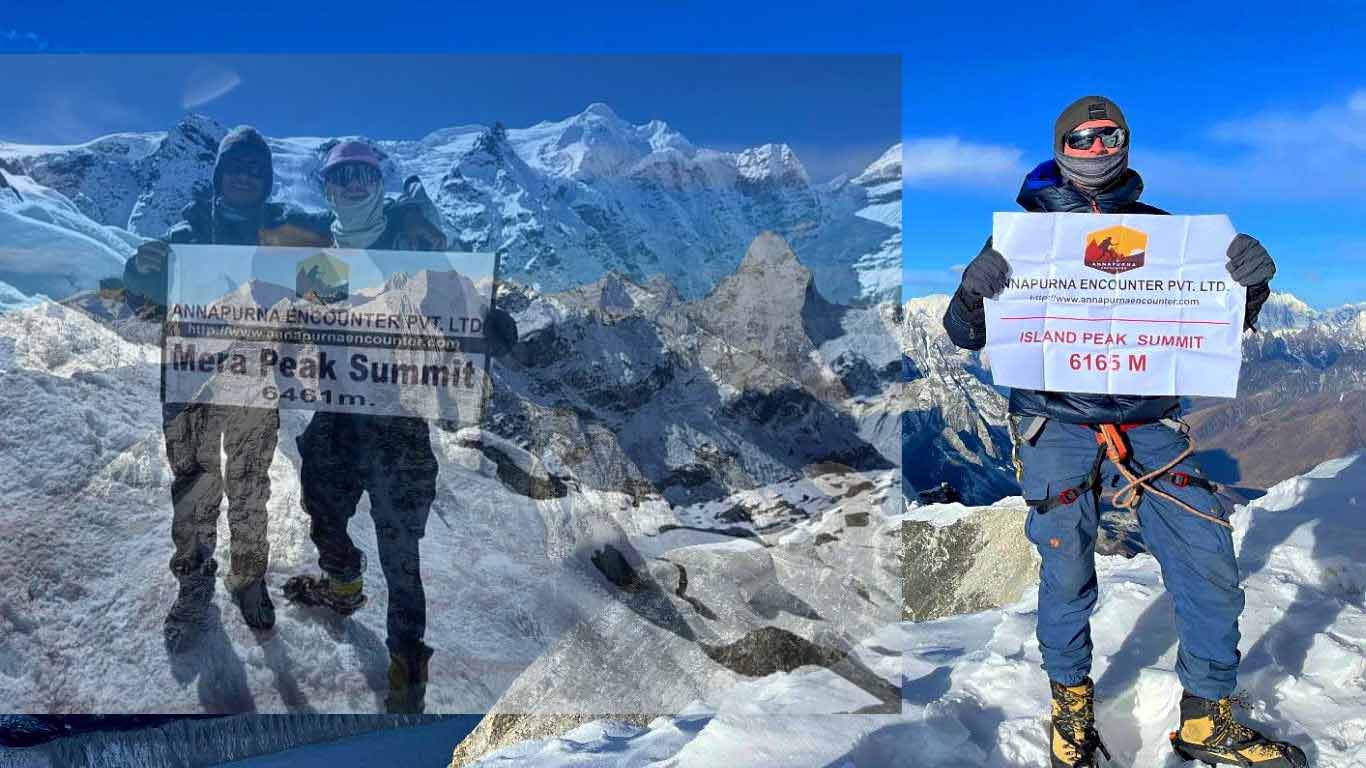

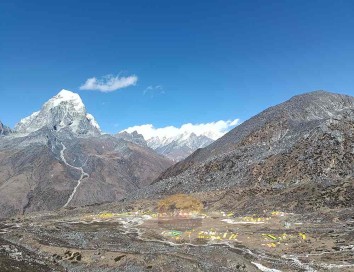
.jpg)

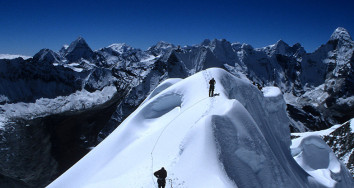
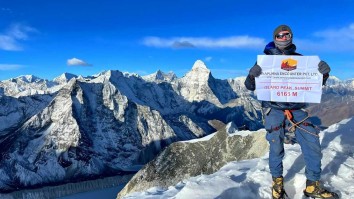
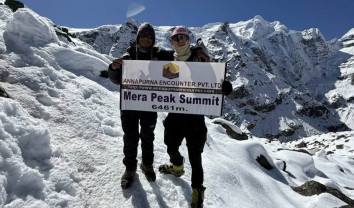
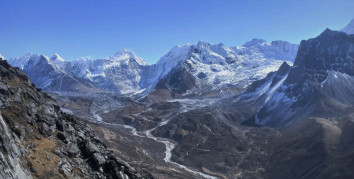
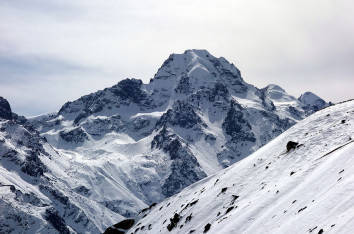
.jpg)
.jpg)

